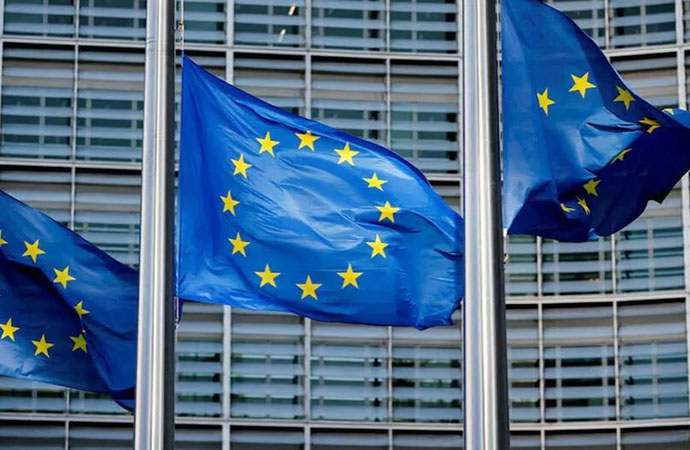Reportage

A cargo ship sails near the Pedro Miguel Locks on Panama Canal in Panama City, Thursday, Aug. 3, 2023. The Panama Canal Authority said it is limiting traffic to 32 daily ship transits through the canal after months of drought and expect less income in 2024 due to the ongoing water crisis. Photo: AP/UNB
Climate change and El Niño are causing global shortages of everything from Barbie dolls to natural gas
It's been another summer of extreme weather and the relentless drumbeat of climate change syncopating with the warm-water Pacific Ocean cycle of El Niño has reverberated across the globe.
Floods in the Balkans and North Africa have killed thousands, wildfires have raged across much of the Mediterranean, India's rice crop has been hit by drought and Canada's wheat harvests by floods. Meanwhile, in Central America, the driest weather in decades is menacing one of the most important transport arteries on earth.
A massive 40% of the world's cargo passes through the Panama Canal, which ties together the two great oceans in the eastern and western hemispheres.
When it opened in 1914, the canal cut the time it took to transport goods from the Pacific to the Atlantic by five months. No longer did ships have to make the lengthy and somewhat treacherous journey around South America to get from one ocean to the other. But the timing was dreadful.
Opened at the height of pre-First World War globalisation, the canal immediately hit a world trade slump that would last 30 years. Its use was confined to relatively limited regional transport and the US military until the sharp increase in shipping volumes after the Second World War with the reindustrialisation and reintegration of Japan into the Western capitalist economic system and a surge in agricultural trade with South America.
But two great moments of globalisation - the introduction of containerised shipping and the industrialisation of China - have ensured that canal transport volumes have exploded over the past 40 years. Expansion of the canal, completed in 2016, doubled its capacity and allowed the transport of larger ships. More than two-fifths of all the goods traded between Asia and the US today are taken through the canal.
Now, amid a severe regional drought, the canal operators say restrictions on ships using the canal will probably remain in place until next year. According to expert forecasts, El Niño, climate change and rising ocean temperatures will combine into extended dry seasons across Central America well into 2024.
Unlike other globally important shipping lanes and their chokepoints, from the Malacca Straits to the Suez Canal, the Panama Canal depends on freshwater, not saltwater. It takes millions of gallons via a series of reservoirs from the Central American country that gives it its name. Each ship traversing the canal and its locks requires around 50 million gallons of freshwater. But Panama's four million inhabitants also need freshwater, which they take from the same sources.
For most of the canal's life, this hasn't been a problem; Panama is one of the wettest countries on the planet. But the prolonged drought and an unusually hot, dry spell over the summer has seriously reduced the amount of water in the reservoirs. The water level in Lake Gatun, the canal's primary reservoir, is down almost 10 feet on typical September levels. Shortages also threaten to place international shippers in direct conflict with locals in Panama. It could mirror the pattern of water conflicts emerging around the world, such as those around the French mégabassines projects. These pit local residents and farmers against the demands of multinational agribusinesses.
After decades of effective US management, Panama won full control of the Canal in 1999. In April this year, responding to the drought, those local authorities chose to restrict the number of ships that can pass through it and also imposed depth limits. The heavier the ship, the deeper it sinks into the water but fewer, lighter ships mean less freshwater use and greater domestic availability. Taken together, the restrictions mean that not only are fewer ships able to make the journey at any point in time, but that each should be less full. The result is a severe constriction of the volume of goods that can get through the canal.
At the end of August, 135 ships were queued up, 50% more than usual for the time of year. The drought has been sufficiently severe for operators to envisage the restrictions stretching well into the future.
Those restrictions have an economic impact. Freight shipping rates between China and the US have risen 36% over the summer as a direct result. Goods are delayed in transit, everything from Barbie dolls, auto parts and BYD solar panels to water treatment equipment and diabetes testing kits bound for the US from East Asia. Perishables such as beef or avocados from the western coast of South America are also affected. These additional costs and delays feed into rising prices (and potentially shortages) in the US in particular, with some impact on the rest of the world too. The canal has become a significant route for liquified natural gas deliveries into Europe, which means delays will feed into higher energy costs.
In a pattern we saw last year in Europe and the US, when unusually warm weather reduced shipping volumes on crucial inland freshwater trade routes from the Rhine to the Mississippi, rising temperatures and disturbed weather patterns in Central America are feeding directly into rising costs and putting pressure on inflation. Alongside this, there is the brewing conflict over water use in Panama itself.
It is one of the most unequal countries in the world. One in five Panamanians lives below the poverty line even as soaring revenues from the canal have enriched the local elite. Already, there are calls for higher water tariffs to improve the "efficiency" of its use, rather than measures that would not hit ordinary residents so hard. For example, Panama could end its notorious tax haven status and fund domestic infrastructure spending with the revenues.
Panama also features in rising geopolitical rivalry between the US and China. The US has historically treated Panama as its backyard, invading and deposing its de facto leader in 1989 and killing 2,500 people in the process. But Panama was the first country in Latin America to join China's Belt and Road Initiative and Chinese companies have a greater logistical presence around the Canal. In 2016, Landbridge Group, a Chinese company, bought Panama's largest port. When the Canal authorities put out a tender for a new water management system in 2020, five Chinese companies bid for the critical 50-year contract. The growing Chinese influence at one of the world economy's primary chokepoints is sparking calls in Washington for greater integration of the Panama Canal into a broader Central America strategy.
The situation around the Panama Canal is a microcosm of the new world economy: resource conflict, rising costs and geopolitical conflicts, all overdetermined by the rolling ecological crisis. Queues at the canal have eased in recent weeks as shippers have moved to alternate routes. But short of an unexpected, and probably temporary easing of those crisis conditions in 2024, this year's tensions will continue to mount.
From openDemocracy

























Leave a Comment
Recent Posts
Mobs Run Amok: An affront to H ...
It was a bitter disappointment to see the violent attacks on the offic ...
From Pope Francis to Charlie K ...
The death of Pope Francis brought change to the Catholic Church, which ...
In mourning Hadi, let us strengthen our resolve
Israeli Prime Minister Benjamin Netanyahu
The BNP’s acting chairman Tarique Rahman is returnin ..
ICIMOD chief hails SANDEE’s 25 years of shaping Sout ..